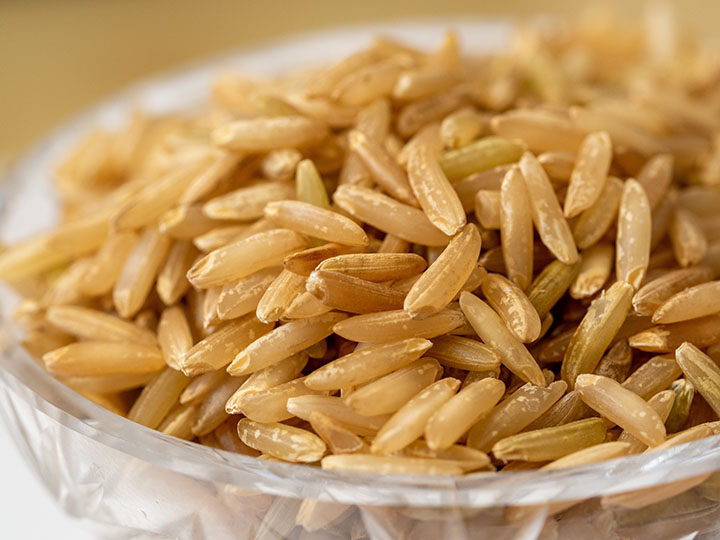The period when rice is newly-harvested is observed across all of India in mid-January. In some regions, it’s called Makar Sankranti and is dedicated to Surya, the Sun god. It marks the end of the winter solstice and the beginning of the Sun’s northward ascent (“Uttaraayanam”) when it enters the sign of Capricorn.1 In Tamil Nadu in South India, it is celebrated as the festival of “Pongal”, which means to boil and overflow, and refers to the special rice dish prepared this time of year.1 The savory version consists of rice cooked with mung dhal and spices of turmeric, cumin, and black pepper. In the sweet version, rice is boiled in milk and jaggery (raw sugar), and cardamom, cashews, and raisins are added. Both versions are made with fresh ghee, are rich, and absolutely delicious!
My father often tells childhood stories of waking up on Pongal day to the delicious aroma of rice, milk, ghee, and spices wafting in the air. After offerings were made to the Gods and cows, and prayers were chanted, the feast was shared with the whole family. Somehow my grandmother managed to feed a dozen hungry mouths by cooking over an old, wood-burning stove and a large pot. No doubt, the quality of food was far superior to the genetically modified and pesticide-laced versions we have today!
Rice (Oryza sativa) is a staple part of the diet in India, where Ayurveda originates.2 It is also used in pujas (Hindu religious ceremonies) and for throwing on newlyweds to symbolize a prosperous beginning to marital life. Rice has many wonderful qualities that make it so desirable.
The ancient ayurvedic texts contain several shlokas on the attributes of rice. It is conducive to the maintenance of good health and should be consumed often.3 Of the myriad of rice varieties, the best is rakta shali (red rice). This is followed by shashtika rice (harvested in 60 days), of which the white variety is superior to the black variety. Brown rice is unprocessed, has a high vitamin content and medium glycemic index, and is very nutritive. On the other hand, eating polished rice, such as parboiled or instant, is not recommended because it has less vitamin value and less Prana (life force).
Rice has a sweet taste, is light, soft, smooth, and nourishing; it is cooling in nature and good for balancing Vata (air/space elements, governing movement) and Pitta (fire element, governing digestion). New rice is heavy and can increase Kapha (earth/water elements, governing grounding), but 1- or 2-year-old rice does not. For this reason, old rice is wholesome to eat in diabetes and obesity, by promoting diuresis. It is worth finding out how old the rice is that we are eating. It is also worth taking extra time to dry roast rice overheat, making it lighter and easier to digest. Another method is soaking the rice for at least 1 hour prior to cooking, to achieve the same effect.
The texts also state rice dishes such as khitchari, made of old rice and mung beans is useful for treating many illnesses. Rice gruel with ghee is good for nourishing the pregnant mother and helping the fetus to grow. Rice wash water (tandulodaka) is used for treating bleeding, leucorrhea, and other disorders.
There are bountiful ways to prepare this beautiful grain, which promote good health and are tasty – from spicy, vegetable pulav and biryani to chapatti (flatbread), soup, idli (steamed rice and dhal cakes), and dosa (pancakes). In the New Year, I hope you all can take time to cook healthy meals, find many peaceful movements, and stay grounded despite the outer tumult. May your good health include rice as an integral part of the regimen!
By Uma Hingorani, Ayurvedic Practitioner
References




